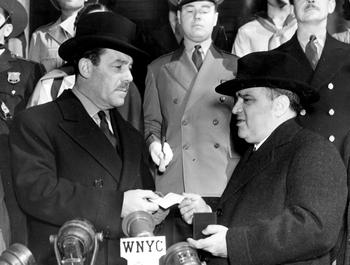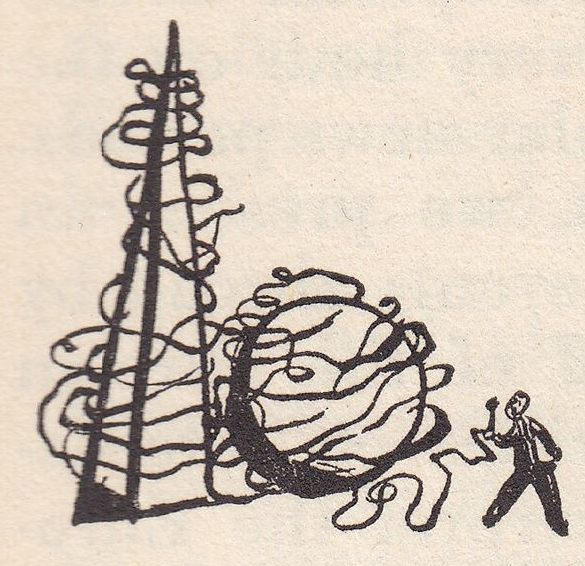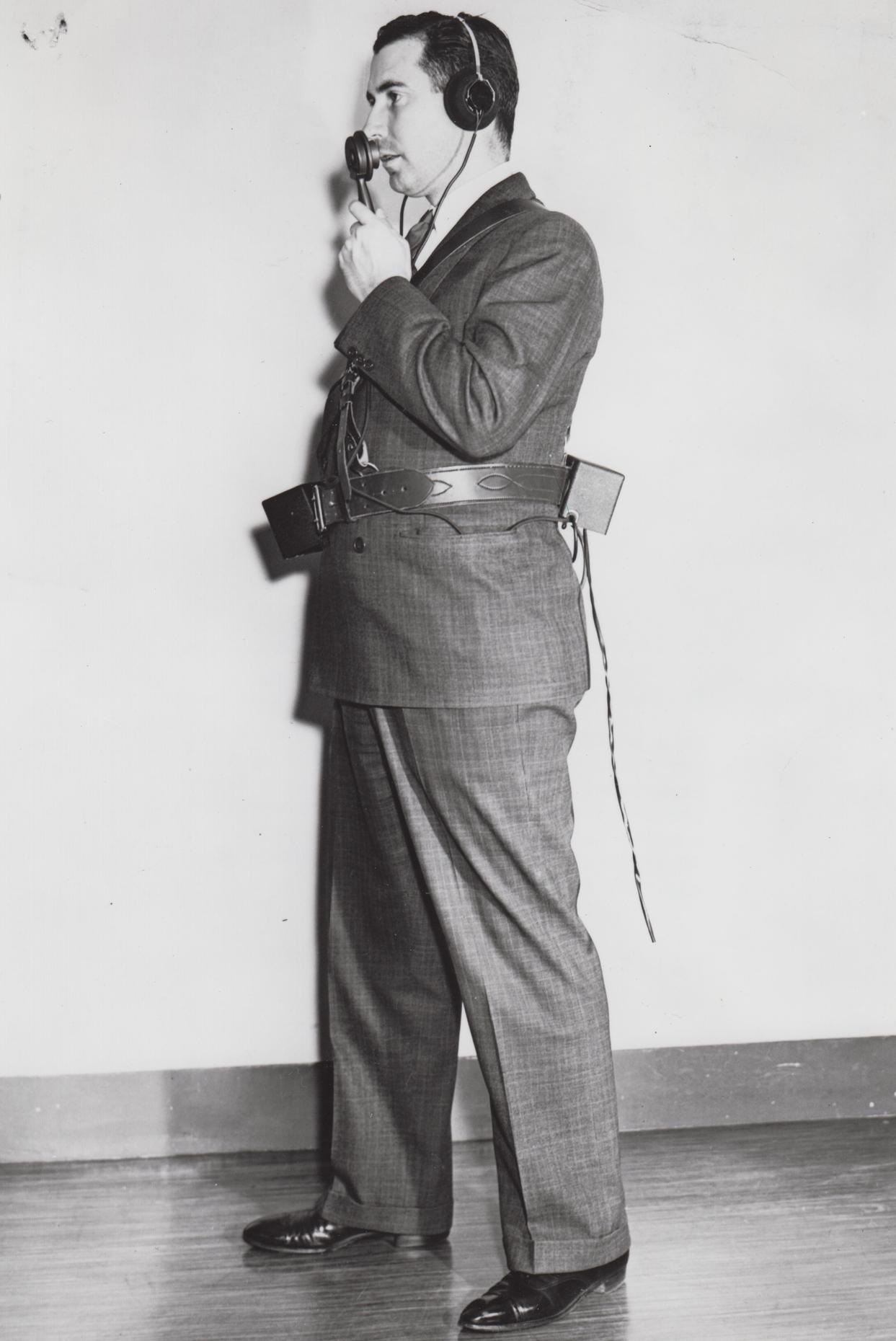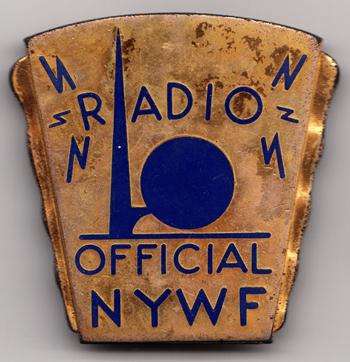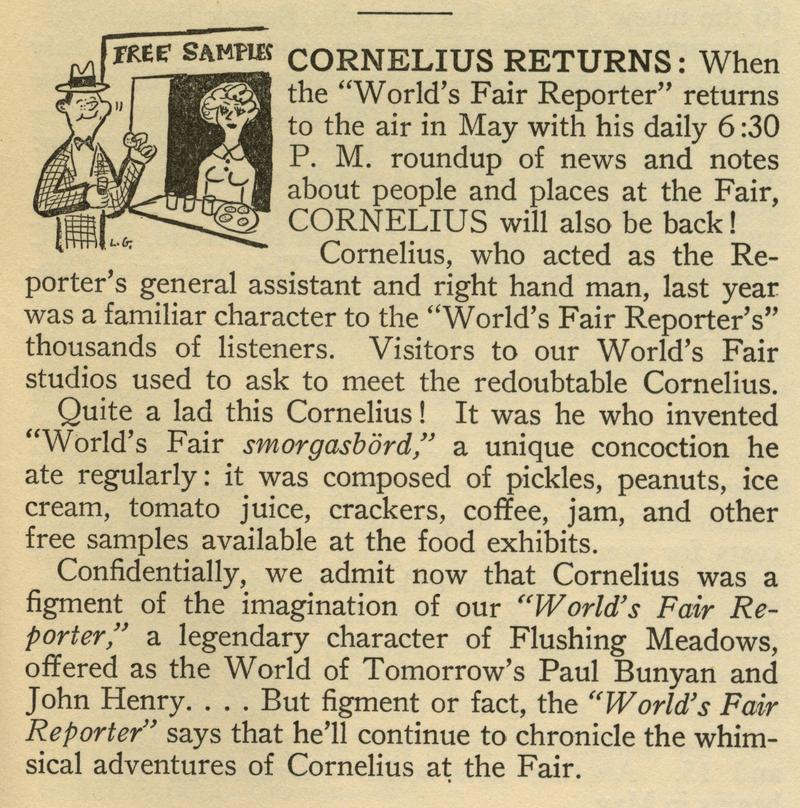 NYPR Archives & Preservation
NYPR Archives & Preservation
WNYC at the 1939-1940 New York World's Fair
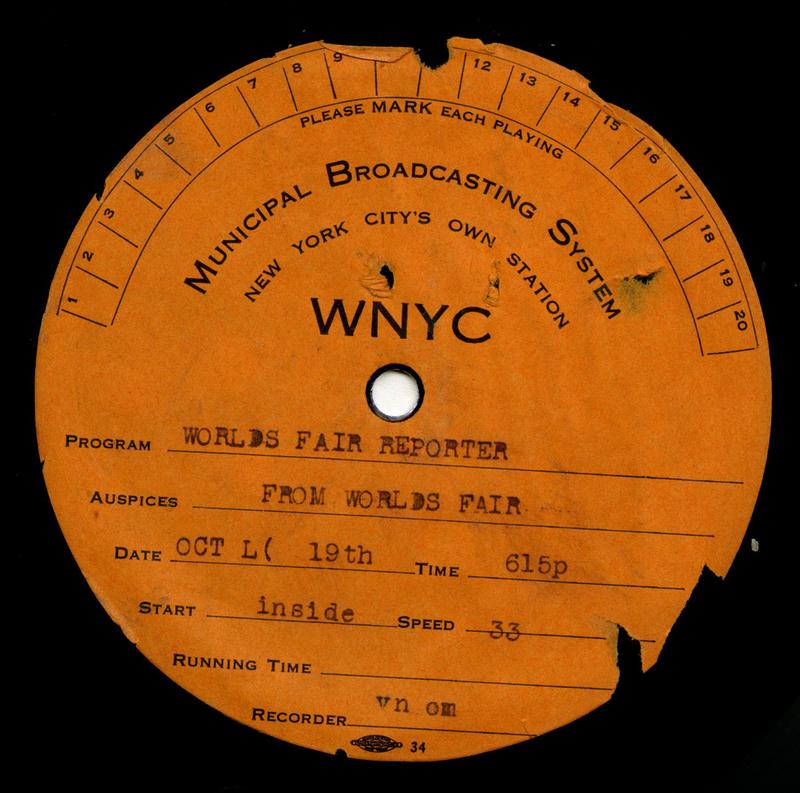
"The Voice of the Fair" —that's what Station Director Morris Novik called WNYC at the outset of the exposition's second season in 1940. By that time, the station had already broadcast more than 800 programs from various spots throughout the Fair's Flushing Meadows/Corona Park grounds —especially from its studios in the City of New York Building.[1]
Overseen by WNYC's Chief Engineer, Isaac Brimberg, the 'ultra-modern' studios had little competition: although WLW Cincinatti's had a studio in the Crosley Corporation Building (feeding the Mutual Broadcasting Company), CBS and NBC had no facilities at the Fair, using only remote lines for their coverage. WNYC, however, was in the heart of the action. Its studios were on the balcony of the City of New York Building, just across the way from the Trylon and Perisphere, and included the building's auditorium, seating 285, along with two 18' x 25' studios for interviews and small gatherings and one smaller studio for the announcing and recording of programs.[2] The announcer's booth was specifically designed to provide a bird's-eye view of the New York City building's large auditorium, where exhibits were always on display.
A large Master Control room, using RCA consoles and other equipment, functioned as the broadcast operations nerve center. It allowed for as many as three separate programs to be sent simultaneously, and it provided connections to the in-house studios and thirteen remote locations. These included WNYC's main Municipal Building operations, The Court of Peace, The Temple of Religion, the WPA music bandshell, and other venues. The WNYC Masterwork Bulletin characterized it this way: "The only pictorial statistics we could think of was that if all the phone wires used in our World of Tomorrow broadcasts were wound around the Perisphere, they would cover that familiar trademark."[3]
Additionally, a portable sound truck made it possible to record special effects and programs throughout the site as well as relaying reports from staffers equipped with battery-powered backpack shortwave transmitters at event locations without direct lines. These units broadcast at 2058 kc and 2190 kc to receivers in Master Control.[4] A 50-watt relay broadcast transmitter operating at 1622 kc could also be found in the facility.
Along with live and recorded coverage of events, WNYC also featured music and wrap-ups for the daily World's Fair Reporter hosted by announcer Russ Johns (heard above). Homesick out-of-towners visiting the fair could listen-in to Today's Home Town News, broadcasts presenting the latest bulletins from twenty major cities around the country. In addition, WNYC aired an interview series, Pleased to Meet You, and weekly concerts on Songs of the 7,000,000. These shows were supplemented with dramatizations of city history on In Old New York, and daily highlights of events and inexpensive sight-seeing activities on Father Knickerbocker Suggests. The Masterwork Bulletin summed-up our coverage this way:
Through the medium of radio we, and you, met Presidents, senators and kings —and the plain people from forty-eight states, from the farms and cities that make American democracy more than just a phrase. There were broadcasts rich in fun, rich in human touch. Others, as those from the great foreign pavilions brought home with great striking clarity the tremendous upheaval taking place overseas.[5]
And then, there was Cornelius.
Listen to the surviving 1939-1940 WNYC World's Fair broadcasts at: WORLD'S FAIR.
________________________________
[1] Novik, Morris S., "Voice of the Fair," Masterwork Bulletin, May-June 1940, pg. 1.
[2] Sperling, J. G., "Radio at the Fair," Communications, May 1939 pg. 10.
[3] "Statistical Stuff," Masterwork Bulletin, September-October 1939, pg.26
[4] "Equipment," Broadcasting, May 1, 1939, pg. 58. These units were designed by WNYC Engineer James Berry under the direction of Chief Engineer Isaac Brimberg and were made by Link Radio Laboratories.
[5] "Fair Farewell," Masterwork Bulletin, November-December 1941, pg. 21.
